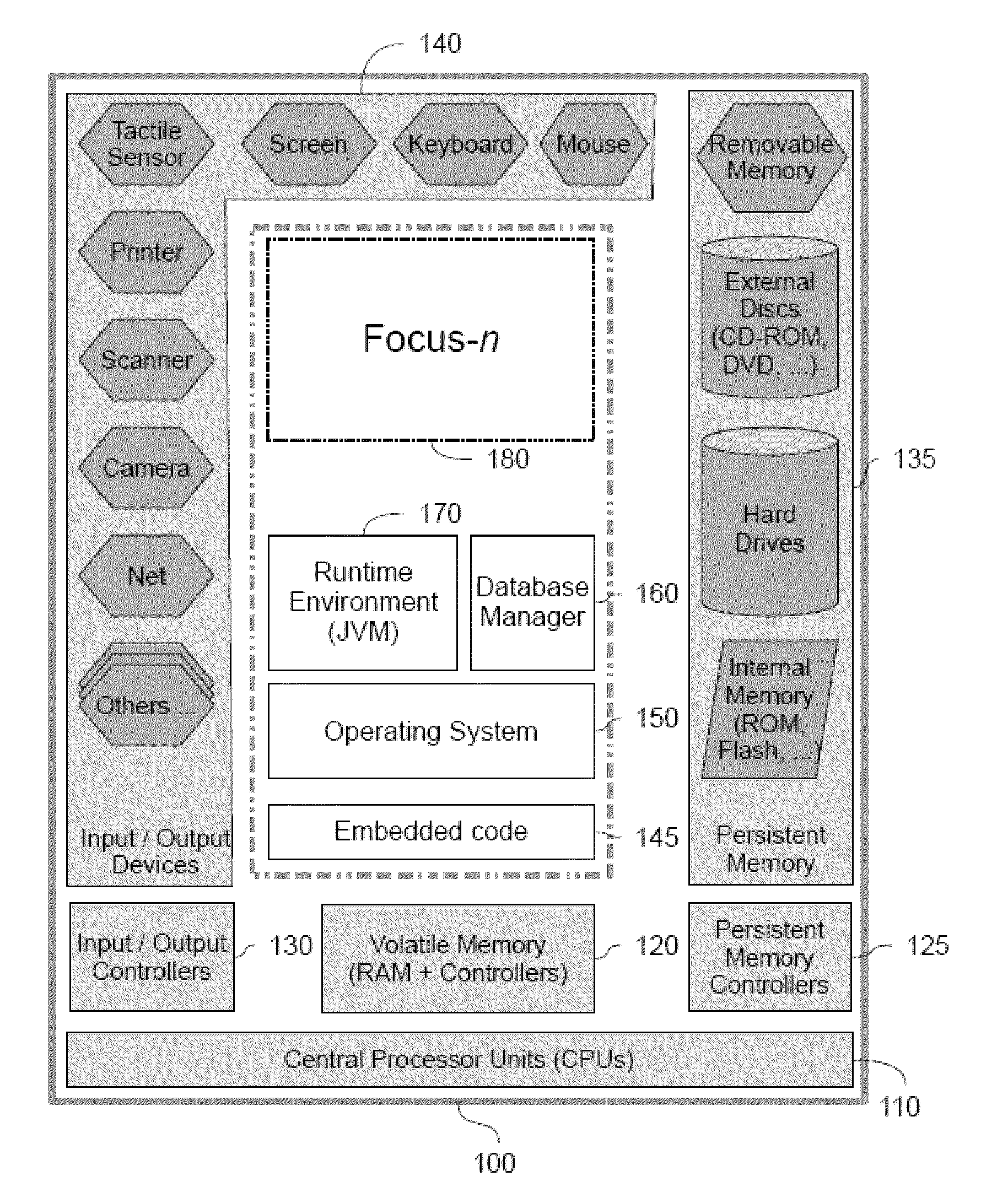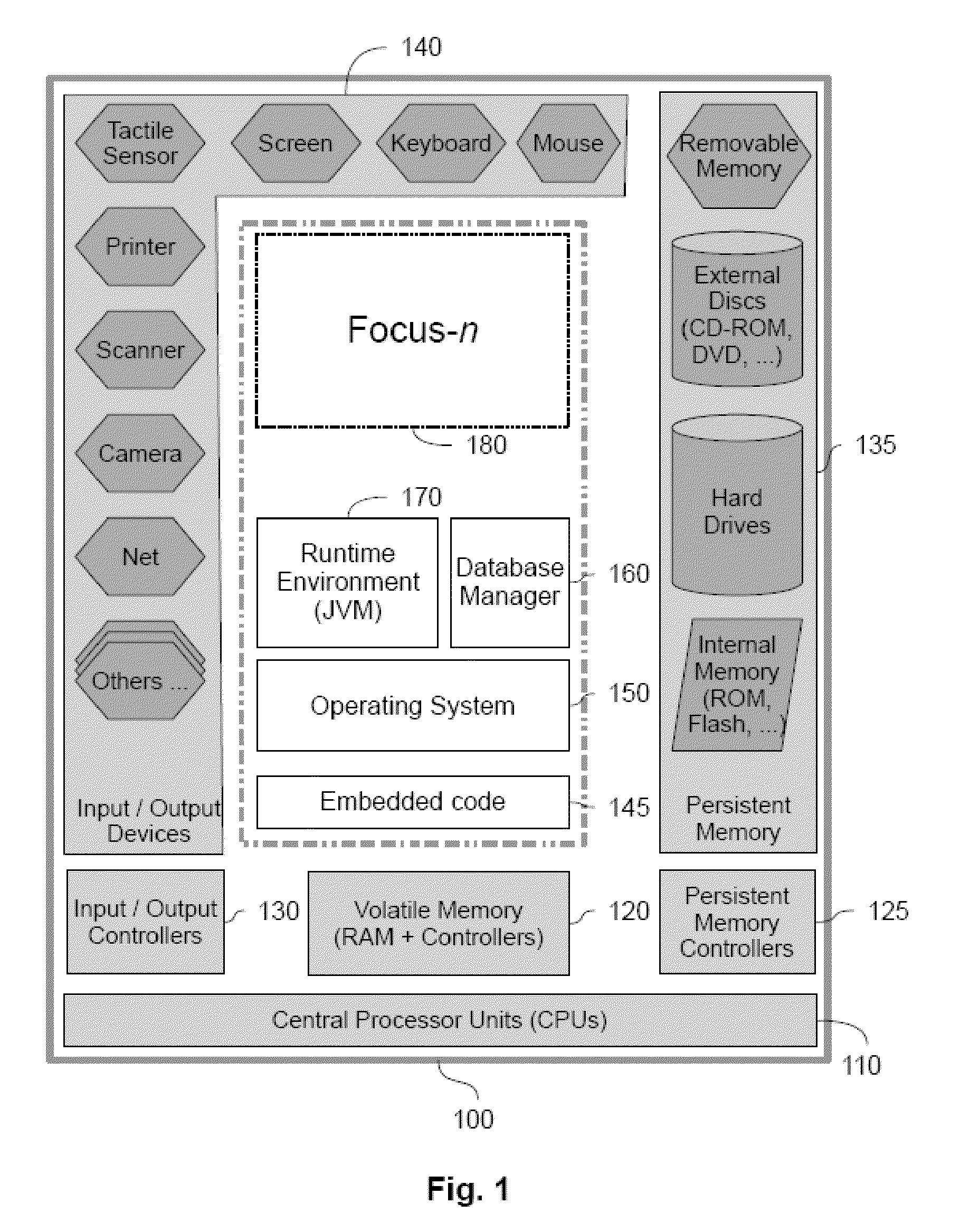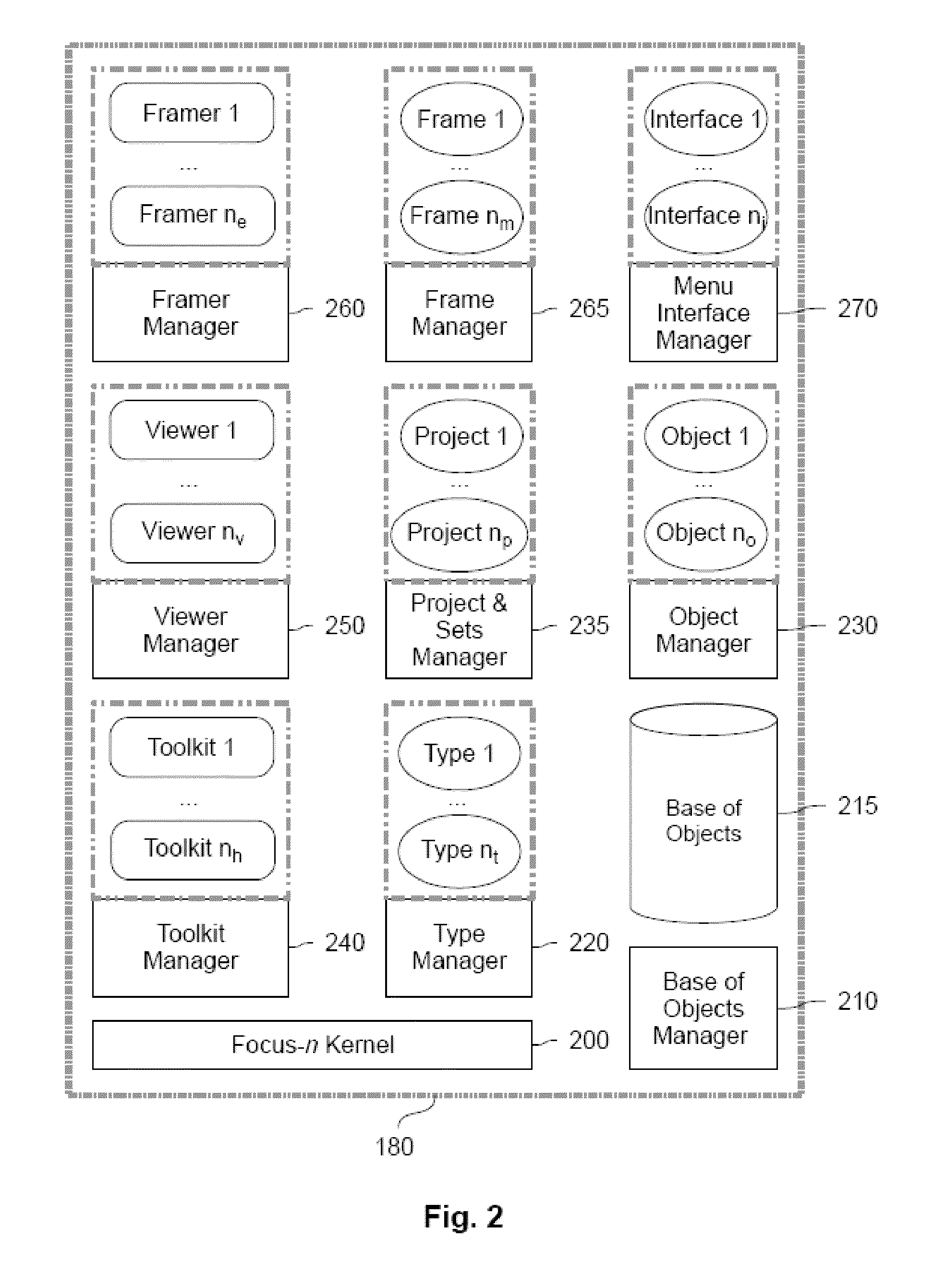System and method for integral management of information for end users
a technology for information management and end users, applied in the field of system and method for integral management of information for end users, can solve the problems of inability to concentrate on the job without significant effort, the user is constantly impelled to an endless learning process, and the user is habitually required to do the same task in different programs
- Summary
- Abstract
- Description
- Claims
- Application Information
AI Technical Summary
Benefits of technology
Problems solved by technology
Method used
Image
Examples
Embodiment Construction
[0067]The invention is preferably practiced in the context of an operating system for integrating management of end-user information resident on a personal computer, which incorporates a Java Virtual Machine (Standard Edition) that executes Java byte-code. However, other object-oriented languages that render capabilities similar to Java may also be utilized. Moreover, the context must also incorporate an object-oriented database manager for storing and retrieving the content of the data objects, although there exists means for translating object-oriented queries to other types of database managers, such relational databases. In any case, it should be understood that the invention may be embodied in many different forms and should not be construed as limited to the embodiments set forth herein.
[0068]FIG. 1 shows a symbolic block diagram of a generic framework 100 for the provided system and method for integrated management of information. It consists of hardware blocks (gray-shaded) ...
PUM
 Login to View More
Login to View More Abstract
Description
Claims
Application Information
 Login to View More
Login to View More - R&D
- Intellectual Property
- Life Sciences
- Materials
- Tech Scout
- Unparalleled Data Quality
- Higher Quality Content
- 60% Fewer Hallucinations
Browse by: Latest US Patents, China's latest patents, Technical Efficacy Thesaurus, Application Domain, Technology Topic, Popular Technical Reports.
© 2025 PatSnap. All rights reserved.Legal|Privacy policy|Modern Slavery Act Transparency Statement|Sitemap|About US| Contact US: help@patsnap.com



